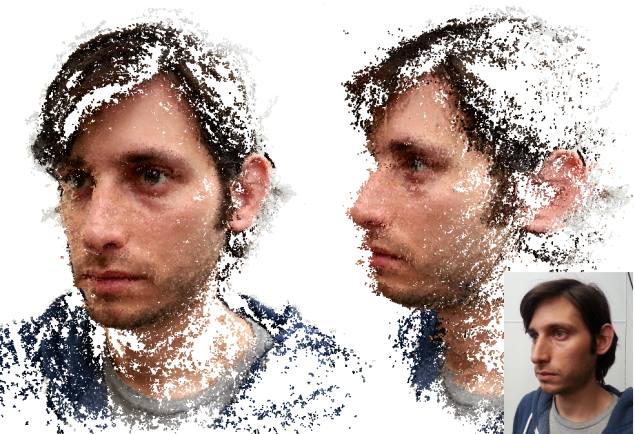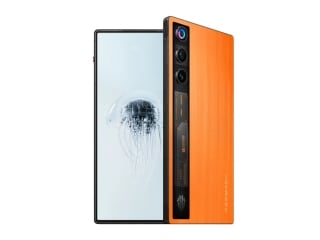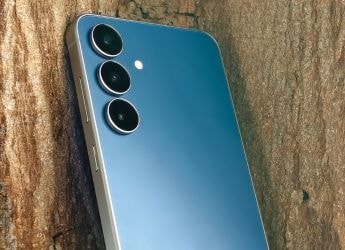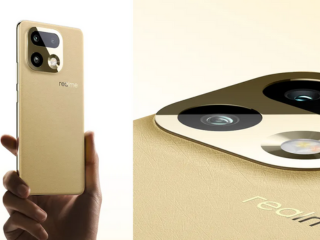New app enables regular smartphones to capture 3D images, models

The technology also allows the 3D capture of faces, giving a third dimension to portraits, profile pictures or images of loved ones. Marc Pollefeys, professor at the Institute for Visual Computing and his group at ETH Zurich developed a software that works with existing smartphone technology that allows the user to scan a 3D model almost as easy as taking a photograph. As the user keeps moving, additional images are recorded automatically and used to extend the 3D model. As all calculations are performed directly on the phone, the user gets immediate feedback and can select additional viewpoints to cover missing parts of the 3D model.
"This is an important advantage compared to solutions that batch process all the images in the cloud at a later time," said Pollefeys. The app also makes it possible to visualise the state of the 3D scan from different viewing angles, allowing the user to cover all the areas of the object he is interested in. Having a solution on a mobile phone enables the acquisition of 3D scans on-the-fly anywhere. The approach works in a wide variety of settings, including low-light conditions such as inside a museum. A user can capture a 3D model of a museum piece and interactively study it at home later.
After reviewing the model, a user might decide to upload his 3D data to a cloud service to further refine the results. By using the inertial sensors of the phone, the scanning process can be made simple, intuitive and robust. After the 3D capture is started, the system automatically determines the correct moments to extract camera images based on the user motion.
"Only two years ago, such a software only run on massive computers. We were able to shrink processes down on smartphone level and make them highly efficient," said Pollefeys. Contrary to image-only 3D capture solutions, the app is able to determine the absolute size of the scanned 3D object, as well as the vertical direction.
Because of the complexity of the calculations needed to reconstruct hundreds of thousands of points, the graphics co-processor (GPU) of the phone is used to enable a faster reconstruction and increase interactivity for the user. Having a convenient way of getting 3D models of everyday objects, users will now be able to copy real-world objects by scanning a full 360 degree model of an object.
The resulting 3D model can be used for visualisation or augmented reality applications, or even be used for 3D printing, potentially at a remote location, effectively enabling the user to replicate an object.Get your daily dose of tech news, reviews, and insights, in under 80 characters on Gadgets 360 Turbo. Connect with fellow tech lovers on our Forum. Follow us on X, Facebook, WhatsApp, Threads and Google News for instant updates. Catch all the action on our YouTube channel.
Related Stories
- Samsung Galaxy Unpacked 2025
- ChatGPT
- Redmi Note 14 Pro+
- iPhone 16
- Apple Vision Pro
- Oneplus 12
- OnePlus Nord CE 3 Lite 5G
- iPhone 13
- Xiaomi 14 Pro
- Oppo Find N3
- Tecno Spark Go (2023)
- Realme V30
- Best Phones Under 25000
- Samsung Galaxy S24 Series
- Cryptocurrency
- iQoo 12
- Samsung Galaxy S24 Ultra
- Giottus
- Samsung Galaxy Z Flip 5
- Apple 'Scary Fast'
- Housefull 5
- GoPro Hero 12 Black Review
- Invincible Season 2
- JioGlass
- HD Ready TV
- Laptop Under 50000
- Smartwatch Under 10000
- Latest Mobile Phones
- Compare Phones
- Huawei Nova 15
- Huawei Nova 15 Pro
- Huawei Nova 15 Ultra
- OnePlus 15R
- Realme Narzo 90x 5G
- Realme Narzo 90 5G
- Vivo S50 Pro Mini
- Vivo S50
- Asus ProArt P16
- MacBook Pro 14-inch (M5, 2025)
- Huawei MatePad 11.5 (2026)
- OnePlus Pad Go 2 (5G)
- Huawei Watch 10th Anniversary Edition
- OnePlus Watch Lite
- Acerpure Nitro Z Series 100-inch QLED TV
- Samsung 43 Inch LED Ultra HD (4K) Smart TV (UA43UE81AFULXL)
- Asus ROG Ally
- Nintendo Switch Lite
- Haier 1.6 Ton 5 Star Inverter Split AC (HSU19G-MZAID5BN-INV)
- Haier 1.6 Ton 5 Star Inverter Split AC (HSU19G-MZAIM5BN-INV)

















